A Brief History of the Pequot War
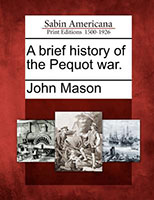
Publication: 1736
In order to bring to an end both the Pequots' continual harassment of the new settlers and their plans for a great Indian confederation which might include the large Narragansett tribe, the Connecticut authorities in May of 1637 took the offensive against the Pequots.
A History of the Pequot War (Relation of the Pequot Warres)

Publication: 1660
In 1809, William Trumbull Williams found among the papers of his grandfather, the former Connecticut governor Jonathan Trumbull, a manuscript endorsed in the “bold handwriting” of Trumbull’s seventeenth-century predecessor John Winthrop Jr.: “Lieft Lion Gardiner his relation of the Pequot Warres”
Indian Wars of New England Volumes 1-3

Publication: 1910
Vol. 1: Topography of Indian tribes. The early settler and the Indian. The Pequot war. Wars of the Mohegans.
Vol. 2: The land of the Abenake. The French occupation. King Philip's war. St. Castin's war.
Vol. 3: Queen Anne's war. Lovewell's war. Governor Shirley's war. French and Indian war.
Mystic Fiasco: How the Indians Won the Pequot War

Publication: 2010
American histories have long held that in May 1637, "Connecticut's Birthday", a small force of English colonists guided by Mohegan Native allies set out to break the back of Pequot dominion in New England.
History of the Pequot War
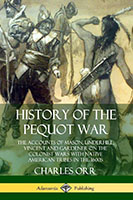
Publication: 1897
Counting as the first large-scale conflict fought between the incipient colonial settlers and Native American peoples, the series of skirmishes that constitute the Pequot War are an important episode in North American history. The Pequot tribe were dominant in Connecticut, their leadership being markedly hostile in contrast to the friendliness and cooperation of other tribes.
History of King Philip's War
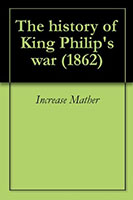
Publication: 1862
Reproduced: 2018
King Philip's War—also known as the First Indian War, the Great Narragansett War or Metacom's Rebellion—took place in southern New England from 1675 to 1676. It was the Native Americans' last-ditch effort to avoid recognizing English authority and stop English settlement on their native lands.
Flintlock and Tomahawk
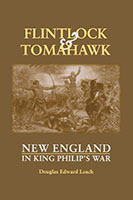
Publication: 1958
This classic account of King Philip’s War, first published in 1958, offers a bird’s-eye view of the conflict, from the Wampanoag sachem’s rise to his ultimate defeat. The battles, massacres, stratagems, and logistics of this war are all detailed, with the leaders of both sides figuring prominently in this tale of bloodshed, privation, and woe. The author weighs all the factors contributing to the Native Americans’ defeat and surveys the effects of the war on the lives of both Indians and colonists in the years to come. With insight, balance, and compassion, Leach portrays the tragedy of the war and points toward the future of the nascent American republic.
King Philip's War: Civil War in New England, 1675-1676
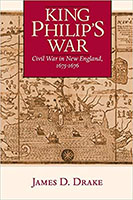
Publication: 1999
Although traditionally understood as an inevitable clash of cultures or as a classic example of conflict on the frontier between Indians and whites, in the view of James D. Drake it was neither. Instead, he argues, King Philip's War was a civil war, whose divisions cut across ethnic lines and tore apart a society composed of English colonizers and Native Americans alike. According to Drake, the interdependence that developed between English and Indian in the years leading up to the war helps explain its notorious brutality.
The Name of War
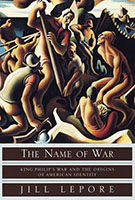
Publication: 1998
Telling the story of what may have been the bitterest of American conflicts, and its reverberations over the centuries, Lepore has enabled us to see how the ways in which we remember past events are as important in their effect on our history as were the events themselves.
King Philip's War
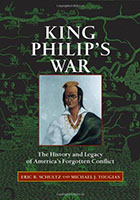
Publication: 2000
Through a careful reconstruction of events, first-person accounts, period illustrations, and maps, and by providing information on the exact locations of more than fifty battles, King Philip's War is useful as well as informative. Students of history, colonial war buffs, those interested in Native American history, and anyone who is curious about how this war affected a particular New England town, will find important insights into one of the most seminal events to shape the American mind and continent.
Igniting King Philip's War: The John Sassamon Murder Trial

Publication: 2001
Although it is usually considered from a political or cultural standpoint, Kawashima retells the story of the murder and trial from the perspective of legal history and overlapping jurisdictions. He shows that Plymouth's aggressive extension of its legal authority marked the end of four decades of legal coexistence between Indians and colonists, ushering in a new era of cultural and legal imperialism.
Black Goose: The History of Seekonk Vol 1

Publication: 2017
This compelling literary narrative explains how the Seekonk Plain became the first frontier settlement of the Plymouth and Massachusetts Bay Colonies starting in the early colonial year of 1643.
Memory Lands

Publication: 2018
This book moves back and forth across time and place in order to weave together a dense and wide-ranging reconstruction of King Philip's War and its many continuing consequences.
Our Beloved Kin
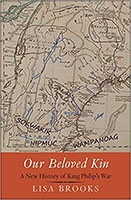
Publication: 2018
With rigorous original scholarship and creative narration, Lisa Brooks recovers a complex picture of war, captivity, and Native resistance during the “First Indian War” (later named King Philip’s War) by relaying the stories of Weetamoo, a female Wampanoag leader, and James Printer, a Nipmuc scholar, whose stories converge in the captivity of Mary Rowlandson.
The Memoirs of Capt. Peter Drake
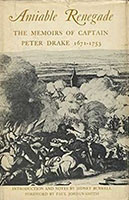
Publication: 1755
Containing, an Account of Many Strange and Surprising Events, Which Happened to Him Through a Series of Sixty Years, and Upwards.
The Border Wars of New England

Publication: 1897
Originally published over 75 years ago, The Border Wars of New England is Samuel Adams Drake's enlightening compact historical description of what has been commonly referred to as King William's and Queen Anne's Wars.
The Colonial Wars 1689 - 1762

Publication: 1964
Although the colonial wars consisted of almost continuous raids and skirmishes between the English and French colonists and their Indian allies and enemies, they can be separated into four major conflicts, corresponding to four European wars of which they were, in varying degrees, a part: King William's War (1689-97) (War of the League of Augsburg); Queen Anne's War (1702-13) (War of the Spanish Succession); King George's War (1744-48) (War of the Austrian Succession); and The French and Indian War (1755-62) (Seven Years' War).
American Colonies: The Settling of North America

Publication: 2002
A multicultural, multinational history of colonial America.
The First Frontier
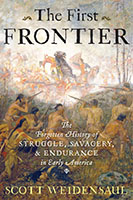
Publication: 2012
Frontier: the word carries the inevitable scent of the West. But before Custer or Lewis and Clark, before the first Conestoga wagons rumbled across the Plains, it was the East that marked the frontier.
King William's War

Publication: 2021
While much has been written on the French and Indian War of 1754–1763, the colonial conflicts that preceded it have received comparatively little attention. Yet in King William’s War, the first clash between England and France for control of North America, the patterns of conflict for the next seventy years were laid, as were the goals and objectives of both sides, as well as the realization that the colonies of the two nations could not coexist.